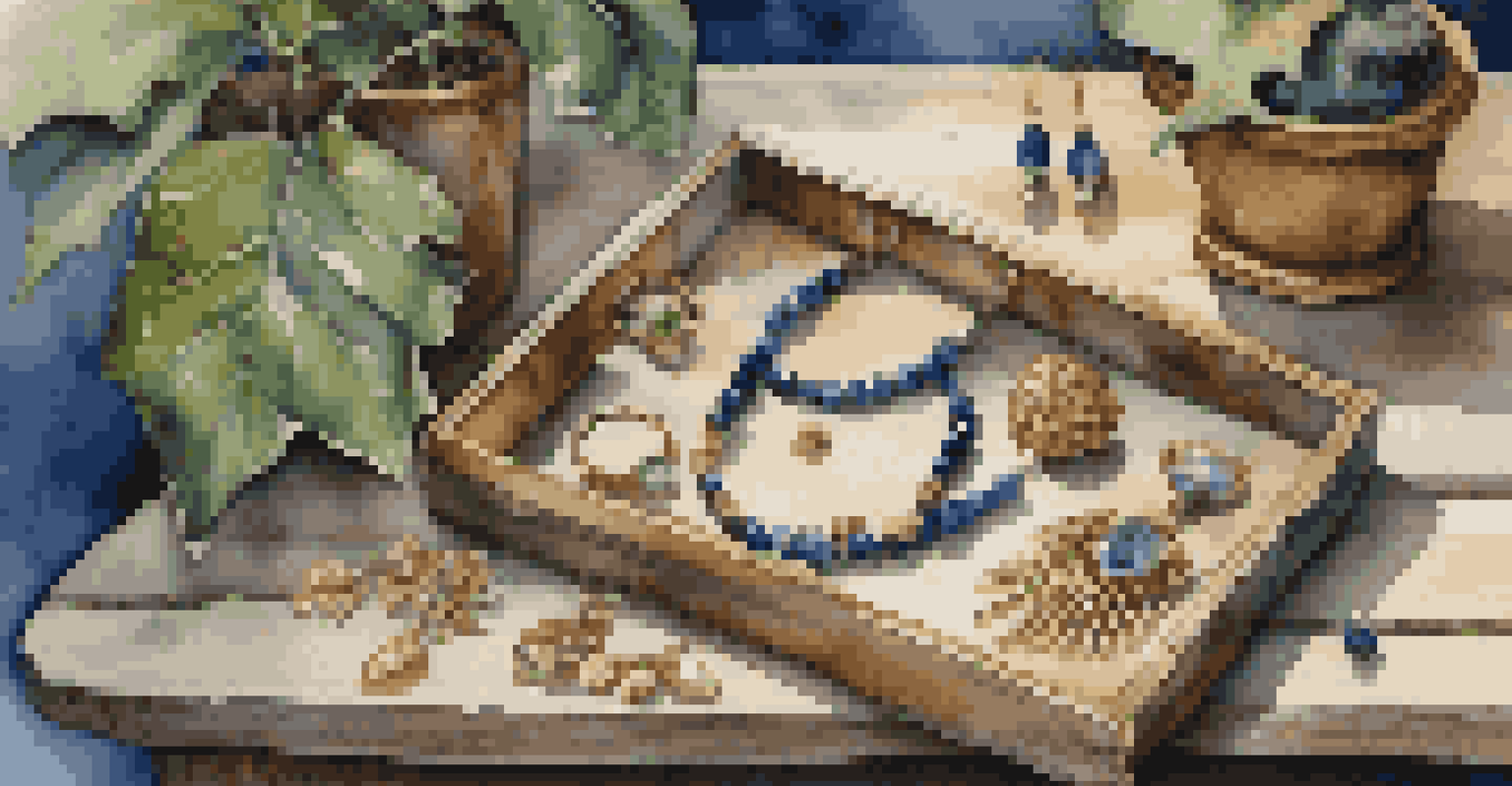Incorporating Personal Stories into Your Jewelry Designs

Why Personal Stories Matter in Jewelry Design
Jewelry is more than just an accessory; it often carries deep personal significance. Incorporating personal stories into your designs can create a powerful connection between the piece and its wearer. These stories can be about cherished memories, milestones, or emotions that resonate on a personal level.
Jewelry is a way of keeping memories alive.
When customers wear jewelry that tells their story, it transforms into a meaningful expression of their identity. Each piece can serve as a reminder of love, loss, or triumph, enhancing its value far beyond its material worth. This emotional layer can make your designs stand out in a crowded market.
By sharing these personal narratives, you can foster a deeper bond with your audience, inviting them to see your work as more than just products. It’s about creating a legacy, allowing your pieces to hold significance that transcends time.
Finding Inspiration in Personal Experiences
The best sources of inspiration often lie within your own life experiences. Reflecting on pivotal moments, relationships, or even challenges can help you identify themes that resonate with you. This self-exploration can lead to unique design concepts that authentically capture your journey.

For instance, a piece inspired by a grandmother’s stories could incorporate elements that symbolize wisdom and strength. Such designs can evoke nostalgia and emotion, connecting generations through wearable art. Think of how you can transform these memories into tangible pieces.
Personal Stories Enhance Jewelry
Incorporating personal narratives into jewelry designs creates a meaningful connection between the piece and its wearer.
When you draw from your own narrative, it infuses your work with authenticity. Customers appreciate the genuine connection behind a design, making them more likely to feel a personal attachment to your jewelry.
Engaging with Customers' Stories
One of the most rewarding aspects of jewelry design is the opportunity to engage with your customers' stories. Encourage them to share their own experiences and how they relate to your work. This not only builds community but also inspires new design ideas that resonate with your audience.
A piece of jewelry is often a story that has been told.
Consider hosting events or online forums where customers can share their narratives. You might find that a particular theme or story resonates with many, leading to a collection that tells a broader tale. Listening to your customers can enrich your creative process.
By valuing their stories, you create a two-way relationship that enhances customer loyalty. It transforms the buying experience into a collaborative journey, where each piece is not just sold but also cherished as part of a shared narrative.
Techniques for Weaving Stories into Designs
There are various techniques you can use to incorporate stories into your jewelry designs. One approach is to use symbols or motifs that represent specific experiences or emotions. For example, a heart shape might signify love, while a feather could symbolize freedom.
Another technique is to use color and texture to evoke feelings tied to personal stories. The warm tones of gold might remind someone of cherished family moments, while a rough texture could symbolize resilience. These design elements can tell a story without a single word.
Engagement Builds Customer Loyalty
Interacting with customers' stories fosters community and transforms the buying experience into a collaborative journey.
Additionally, consider using engraving or personalization options to make each piece unique. Allowing customers to add initials, dates, or short messages can turn a beautiful piece of jewelry into a cherished keepsake, celebrating their own narratives.
Creating a Narrative Through Collections
Collections can serve as a powerful way to tell a story across multiple pieces. By grouping designs that share a common theme, you can create a cohesive narrative that resonates with customers. This approach invites individuals to explore an entire story, rather than just a single piece.
For example, a collection inspired by different stages of love could include pieces representing friendship, romance, and commitment. Each piece can stand alone yet contribute to a larger narrative about relationships. This can encourage customers to invest in multiple items that reflect their own journeys.
By curating collections with a clear narrative, you enhance the storytelling aspect of your brand. Customers are drawn to the idea of owning a piece of a larger story, making your designs even more appealing.
Using Social Media to Share Stories
In today's digital age, social media is an invaluable tool for sharing personal stories related to your jewelry designs. Platforms like Instagram and Pinterest allow you to visually communicate narratives, showcasing how your pieces resonate with real-life experiences. This creates an engaging way to connect with potential customers.
Consider featuring customer stories alongside images of your jewelry, highlighting how each piece plays a role in their personal journey. This not only builds trust but also fosters a community of shared experiences. Your audience will appreciate the authenticity and relatability of these narratives.
Storytelling Boosts Sales Success
Emotional connections to personal stories can drive higher conversion rates and differentiate your brand in a crowded market.
Additionally, storytelling through social media can help your brand stand out. As customers engage with your posts, they become emotionally invested in your journey and the stories behind your designs. This can lead to increased brand loyalty and word-of-mouth referrals.
The Impact of Storytelling on Sales
Incorporating personal stories into your jewelry designs can significantly impact your sales. When customers feel a connection to a story, they are more likely to invest in a piece that resonates with their own experiences. This emotional connection can lead to higher conversion rates.
Moreover, storytelling allows you to differentiate your brand in an oversaturated market. While many jewelry makers focus solely on aesthetics, focusing on the narrative gives you a unique selling proposition. Customers are often willing to pay a premium for pieces that hold personal significance.

Ultimately, the stories behind your designs can create memorable experiences for your customers. When they wear your jewelry, they carry a piece of their story with them, elevating both their experience and your brand's value.